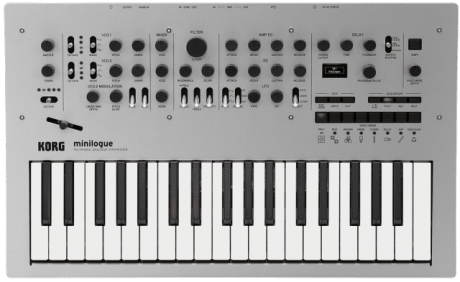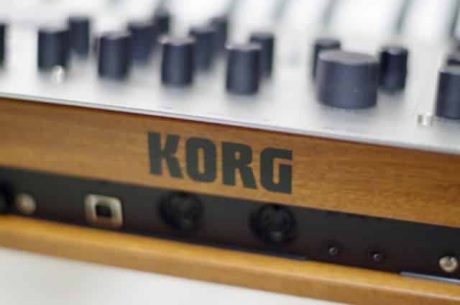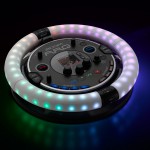
Korg Minilogue – Powerful Analog Synth on a Budget
Korg has been a front runner of the analog synthesizer world since the production of the Prototype No.1 in the 1970’s. Since then, they have continuously pioneered the scene by reinventing themselves, while sticking true to their roots. Korg may have just pushed the envelope again with the release of the Minilogue, a compact, powerful and affordable polyphonic synthesizer.
The Minilogue provides you with a classic analog sound with a maximum of four voices. There are 200 programs, with 100 presets and 100 programmable slots. There is a 16 step polyphonic sequencer with a motion sequencer that can be assigned up to four different parameters. Korg provided you 41 control parameters which allows you to have immediate control over your sound. Some of the more noteworthy, the “standout,” features if we may, is the OLED oscilloscope and the voice mode option.
The oscilloscope is a pretty neat feature that distinguishes the Minilogue from its classic counterparts. Tucked in neat and sleek within your control parameters, the little visual display is an affective way to track how your wave form is being effected. The oscilloscope, combined with the straightforward set of control parameters, makes for a quick learn for anyone who is new to synthesis.
The next distinguishing set of features in the Minilogue is the voice mode options. The four voices that are provided can be altered in eight ways: poly, duo, unison, mono, chord, delay arpeggiated, and side chain. This means that each individual voice can be sent to one of the eight voice options, allowing you to make a wide range of different sounds. Let’s look at what each parameter does, explained by Korg them self:
- POLY – operates as a four-voice polyphonic synthesizer
- DUO – operates as a unison two-voice polyphonic synthesizer
- UNISON – operates as an all-unison mono synthesizer
- MONO – operates as a mono synth with sub-oscillator
- CHORD – produces chords
- DELAY – voices 2–4 sound consecutively at a delay following voice 1
- ARP – an arpeggiator operates with up to four voices
- SIDE CHAIN – when a note sounds, the volume of the preceding voice is lowered “
With these options, you are granted with a wide range of synthesis and expression. Finally the last aspect to take note of is the general build of the Minilogue, packed with an aluminum top panel, rubber-coated knobs, and wood back panel. Korg provided the market with a sexy and powerful synthesizer for an affordable price.
You can pick one up for $500, which is a bargain for what you’re getting. Checkout the video below to get a full look at the Minilogues capabilities.
[su_youtube_advanced url=”https://www.youtube.com/watch?v=cmsiNqrM374″ showinfo=”no” rel=”no” modestbranding=”yes”]










0 responses on "Korg Minilogue - Powerful Analog Synth on a Budget"